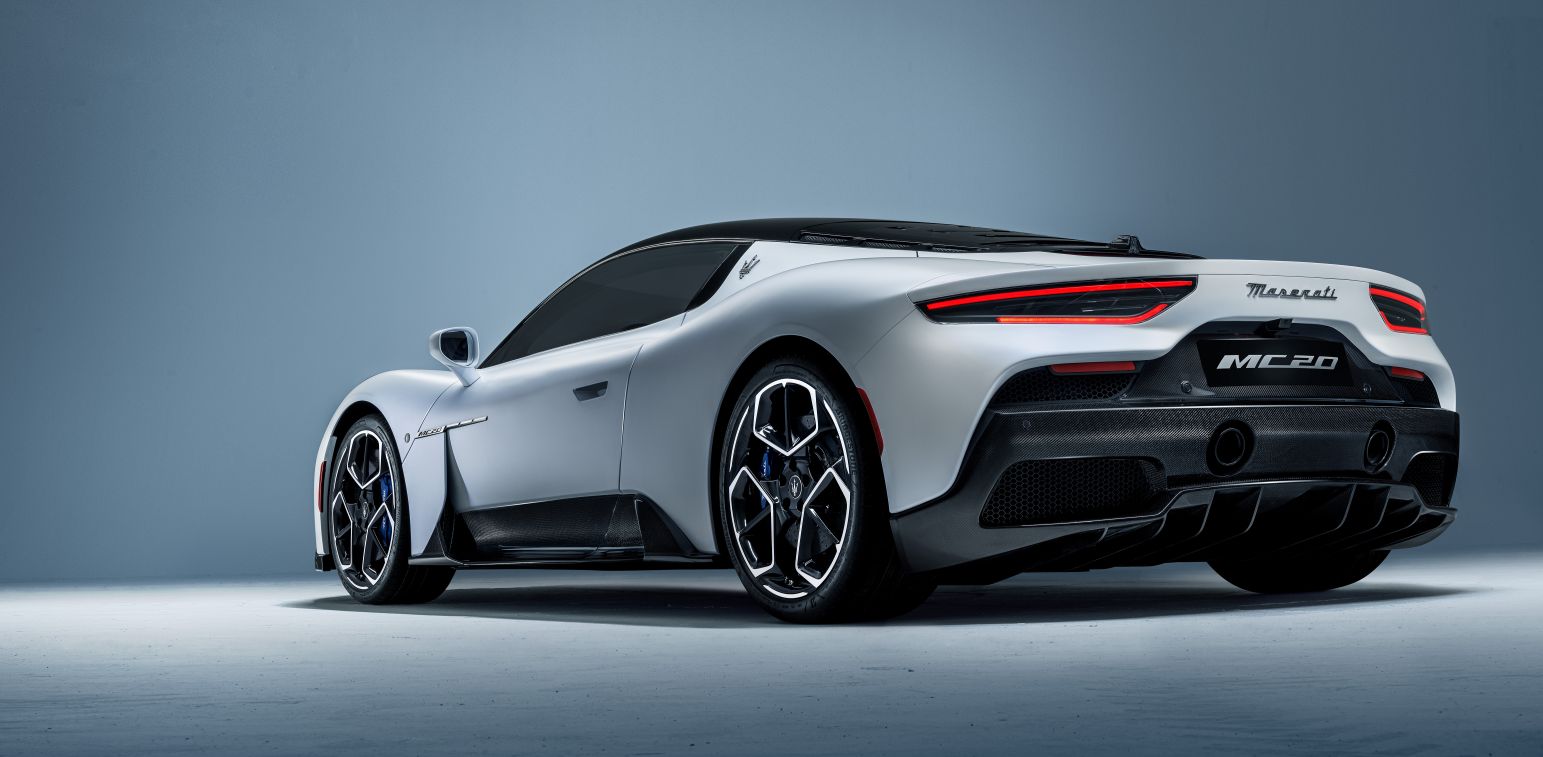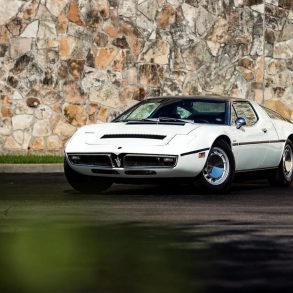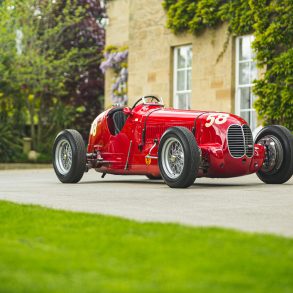Maserati has just revealed its first supercar in 16 years. The Maserati MC20 (MC for Maserati Corse and 20 for 2020) is an elegant mid-mounted twin-turbo V6 two-seater with more than 600 horsepower on tap. But will it live up to the name of its predecessor and start a needed renaissance of the brand?
Super Heroic Reveal of the Maserati MC20
As we all know, the year 2020 hit us hard in the most unpredictable of ways. Automotive shows were promptly canceled, yet the cars had to be presented to the public. Just like Gotham was lit up seeking help from Batman, various landmarks around the world were illuminated by the Trident and a date announcing the return of the Maserati Corse.

The launch event took place in Modena, Italy under the slogan ‘MMXX. Time to be audacious’. There, the MC20 was presented to the crowd consisting of selected members of the public on the grandstands and VIP clients seated inside the current lineup of cars, followed by legendary models from the marque’s illustrious history acting as the most exclusive front row seats. The event was everything: original, dramatic, emotional, and by all means audacious.
In its hometown of Modena, Maserati used another launching technique as old as time yet always effective. The prototype was presented at the Piazza Grande, the city’s main square. Tradition is what matters the most in Italy, and it’s safe to say that the team paid respect to the old masters even when launching a brand-defining car meant to take Maserati into a bright future.
Aerodynamic Design- Blending Elegance with Efficiency
Designing the MC20 occurred over a 24-month period with an innovative way involving Lab engineers, designers from the Maserati Style Center, and Engine Lab.
The team at Maserati spent more than 200 hours in the Dallara Wind Tunnel along with 1000 Computational Fluid Dynamics simulations to create a car that not only has improved aerodynamics but is also a sincere work of art. The end product is sporty, elegant while at the same time efficient and lightweight.

The aerodynamic design of the MC20 can be divided into two parts. In the upper part, stylistic considerations predominate. The forms respond fundamentally to aesthetic priorities with the aerodynamic highlights combined into the lines conceived by the designers which produce high efficiency without hindering the sleek bodywork.
An example of aesthetic priorities is the air vents on the bonnet and sides of the MC20. Although they provide a vital role in providing the engines air intake, they are virtually invisible when viewing the MC20 at certain angles. In addition, there are no aerodynamic appendages- the rear spoiler is modest and enhances up-washing produced by the floor, and improves the downforce. Finally, there are the doors: an attractive butterfly design that adds to visual excitement when both doors are either fully lifted or open ajar.



The lower aspect of the Maserati MC20 sees the technical elements taking charge. An example is the front air ducts, which are enhanced to provide effective air circulation across the car’s floor and radiator.
Interior- A Racing Cockpit
Inside the MC20, the undivided focus is the driver’s passion for optimal performance. Everything is intended to minimize distraction and to assist with driving performance. The interior materials are black with dark upholstery to reduce windscreen reflections. The layout of the interior has the feel of a racing car cockpit, with functionality been given preference.
The thick steering wheel, covered in black leather with carbon fiber inserts, gives a sporty ‘feel’ while maximizing ergonomics. /further to prevent distraction, only essential buttons are presented including the start and launch control buttons.


Stiffness and Lightness are key Features
The MC20 utilizes a lightweight Dallara-built monocoque chassis weighing just around 100 kilograms. Apart from lightness, the carbon tub adds much needed structural rigidity and stiffness, crucial for all-round performance.
The whole car weighs under 1500 kilograms which is quite lightweight by today’s standards, and we strongly believe that the MC20 will deliver exceptional performance for drivers ready to take its capabilities to the maximum.
Combining the lightweight of the car with its engine power output of 630 hp gives the MC20 bragging rights to being best in class in weight/power ratio at 2.33kg/hp.
The V6 ‘Netunno’ Engine
With the ‘Netunno’ V6 engine, Maserati promises exhilarating speed with a 0-60 mph sprint taking 2.9 seconds with the top speed of 325 km/h.
The Maserati powerhouse is a mid-mounted Nettuno V6 engine, a dual combustion chamber 3.0 liter 90-degree twin-turbocharged unit that revs up to 8000 RPM, producing 630 horsepower and 750 Nm of torque.
There are three main components:
- The pre-chamber which is a combustion chamber between the central spark plug and conventional combustion chamber united by a series of holes.
- The side spark plug that provides back-up when the use of the pre-chamber is not needed. This provides smooth engine combustion.
- Dual (direct and indirect) injection system that reduces noise at low rpm , reduces emissions, and fuel consumption.
In an interview with Ettore Musu, the head of Maserati Powertrain Innovation, he explains the benefit of the pre-chamber. “The pre-chamber
communicates with the main combustion chamber via specially designed small holes. There’s a spark plug inside this object, and this plug ignites an air-fuel mixture forced into this compartment during the piston compression stroke; on the ignition, combustion takes place inside this compartment and emits plasma jets into the main combustion chamber. What does this mean? Jets at very high temperatures are entering the
combustion chamber. These jets trigger combustion not just in one point, as in a conventional engine, but in multiple points, and this enables all parts of the combustion chamber to be reached fast, with much quicker, more efficient combustion.” The result of improving the efficiency of the combustion is an improvement in the engine’s efficiency with higher power output. This is a great result considering the Maserati MC20 can achieve higher performances with reduced fuel use.
For now, Maserati plans to offer the MC20 as a pure petrol car, but the Fiat-owned subsidiary doesn’t hide its plans to electrify its range by creating a zero-emission MC20 in very near future.

Technical Specifications of the MC20
| Engine Layout | V6 90° MTC twin turbo |
| Displacement | 3000 cc |
| Max. power output | 630 CV @ 7500 rpm |
| Peak torque (Nm @ rpm) | 730 Nm @ 3000 – 5500 rpm |
| Acceleration | 0-60 mph <2.9s |
| Top Speed | 325kmph |
| Gearbox | DCT 8 gears |
| Front Suspension | Double-wishbone with virtual steering axle , anti-roll bar (Lifter opt) |
| Rear Suspension | Double-wishbone with virtual steering axle , anti-roll bar |
| Front Brakes | Ventilated discs 380×34 mm (CCM disc 390×36 opt) |
| Rear Brakes | Ventilated discs 350×27 mm (CCM disc 360×28 opt) |
| Weight | <1500kg |
| Wheelbase (mm) | 2,700 |
An All-round Driving Experience
Unlike the GT1-optimized MC12 which was an exclusive track-ready car, the MC20 is built for both the streets and race track by offering four preset driving modes: GT, Sport, Corsa, and Wet.
The GT mode (default driving mode) promises to bring out the regal side of the MC20 by focusing on comfort. Its features include softened suspension and slow and smooth gear shifts, meaning that this mode is ideal for daily road driving.
Sport mode stiffens the suspension, maximizes engine boost, and increases pedal sensitivity for track-ready performance and more engaging driving experience.
Corsa mode takes the MC20 to its full potential with super-fast gear shifting, engine power turned up to the maximum, fully opened exhaust valves and reduced traction control. This mode will serve only the bravest and the most skilled drivers ready to tame the MC20.
Finally, the Wet mode reminds us that safety is among the most important features of modern cars, especially ones unleashing 600 horsepower to the rear wheels. In this mode, traction control will assist when accelerating or cornering on wet and damp surfaces.

The MC20 might be the most important Maserati in the last few decades. The aging Maserati lineup needs some fresh blood, and an exciting supercar is exactly the way towards the future for the company. Plans to electrify the brand will further differentiate Maserati from Ferrari, possibly attracting a new kind of customers, and that’s where the MC20 needs to shine to keep top tier Maserati cars relevant in tough times.
[Source: Maserati]











Totally impressive in design parameters and performance expectations. Congrats to the teams involved.